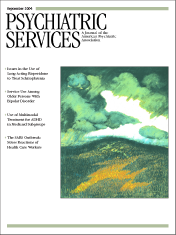This well-written handbook provides a concise overview of many of the key domains of investigation into a devastating psychiatric disorder that, according to the authors, will be a major cause of disability worldwide by 2020, second only to ischemic heart disease. Currently, major depression is a common, costly, and recurrent psychiatric disorder associated with considerable morbidity and excessive mortality. Handbook of Depression provides an excellent overview of major progress in the treatment of depression over the last several decades of the 20th century. The main topics covered by the book include epidemiology, genetics, psychology, psychotherapy, and pharmacotherapy among children, adolescents, adults, and seniors, with promising implications for both prevention and treatment. Altogether 66 contributing authors from the United States, the United Kingdom, and Germany participated in the writing of this book.
The handbook is divided into four clearly organized sections. Part 1 offers in-depth coverage of the epidemiology, course, and outcome of depressive disorders as well as current issues in classification, assessment, and diagnosis. The chapters in part 2 describe models developed to explain vulnerability and risk for depression, including psychological and biological perspectives. Part 3 is of particular interest to practitioners. The chapters in this section address issues of prevention and treatment of depression, including current approaches to pharmacotherapy. Twenty-four currently prescribed antidepressants are discussed, including selective serotonin reuptake inhibitors, novel antidepressants, tricyclics and related compounds, and monoamine oxidase inhibitors.
Part 4 examines the experience of depression in particular demographic groups, defined by age, culture, and gender differences, as well as the assessment and management of suicidality. Throughout the book authors offer current ideas and research findings. They also identify some key questions that remained unanswered at the beginning of the 21st century. The editors conclude with a chapter featuring an integrative summary, reviewing major issues addressed in the book and highlighting important directions for future research in this field for the next decade.
The chapter about marital and family therapy for depression is of particular interest. This chapter demonstrates that there are currently effective ways to intervene with families of depressed patients. Marital and parenting relationships in the families of depressed patients are fraught with many difficulties, even after individual pharmacologic treatment. These problematic relationships can be repaired through efficacious, targeted interventions as documented in this chapter.
Handbook of Depression provides a synthesis of current knowledge about depressive disorders and is a concise overview of recent investigations in this field. It is a valuable sourcebook not only for practitioners and researchers but also for graduate students, interns, and residents. Many highly respected researchers in the area of depression provide the reader with a comprehensive review of current knowledge of depression.

